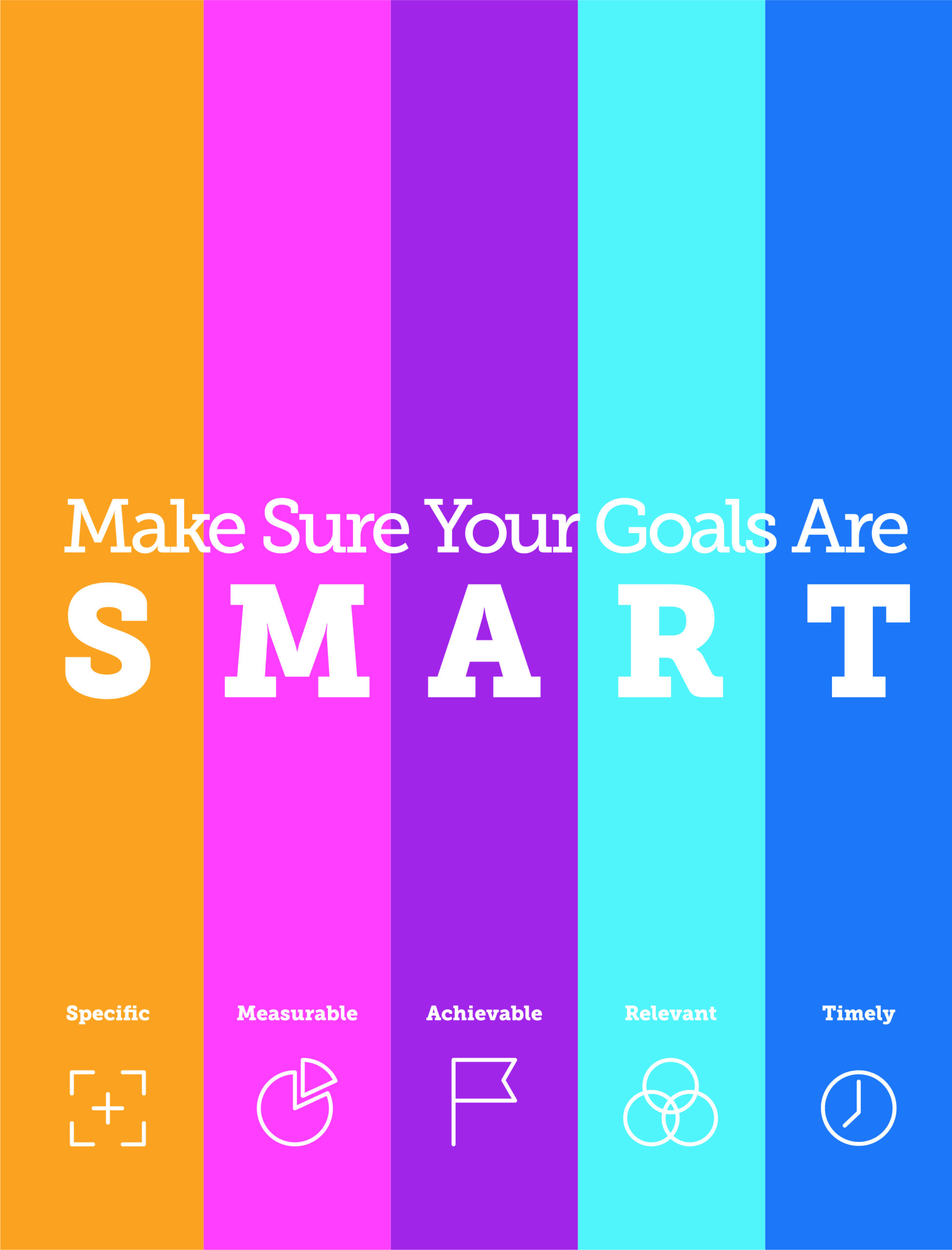by Emma Parnham
A new year offers new opportunities and new goals, or perhaps a re-commitment to goals that weren’t accomplished in 2020 due to COVID-19. For some people, goals might include running a marathon, decorating a room in the house, finishing an outdoor space, professional development such as learning how to take depositions, understanding accounts or a re-commitment to hydration and nutrition. Whatever the goal, there is clear evidence that they are more likely to be achieved if written down: google the neuroscience.
Writing goals down creates clarity: it helps visualize the endpoint (or the finish line) and helps define the plan to getting there. Writing goals down also tends to lead to action, help overcome resistance and setbacks, and enables a visual representation of progress, which should be celebrated. One method commonly used to guide goal setting is the acronym SMART.
SMART is a set of criteria commonly attributed to Peter Drucker’s Management by Objectives. However, the first known use of the term occurs in the November 1981 issue of Management Review by George T. Doran. Professor Robert S. Rubin (Saint Louis University) also wrote about SMART in an article for The Society for Industrial and Organizational Psychology.
SMART has come to mean different things to different people; however, the guiding principles are similar. To make sure your goals are clear and reachable, each one should be:
- Specific (simple, sensible, significant).
- Measurable (meaningful, motivating).
- Achievable (agreed, attainable).
- Relevant (reasonable, realistic and resourced, results-based).
- Time-bound (time-based, time-limited, time/cost limited, timely, time-sensitive).
The SMART acronym’s definition can be expanded to include additional focus areas; SMARTER, for example, includes Evaluated and Reviewed.
Specific
Goals should be clear and specific to help focus effort and create motivation to achieve it. Ask these five “W” questions:
- What do I want to accomplish?
- Why is this goal important?
- Who is involved?
- Where is it located?
- Which resources or limits are involved?
An example might be: “I want to run the New York City marathon in 2021 because I am celebrating a milestone birthday and want to create a personal sense of accomplishment. Plus, I can raise funds for a non-profit close to my heart and improve my health in the process. I will need help, support and guidance from family, friends and experienced runners.”
Measurable
Goals should be measurable so that progress can be tracked. Assessing, seeing and reviewing progress also helps fuel motivation and focus and enables a plan to follow. It is also encouraging to see progress towards a goal.
A measurable goal should address questions such as:
- How much?
- How many?
- How will I know when it is accomplished?
Sticking with the marathon example: “I would like to be able to run 26 miles in 4.5 hours, which means I need to be able to run 10-minute miles. This means I need to incorporate long runs and interval training at specific distances and pacing.”
Achievable
Goals need to be realistic and attainable to be successful. In other words, it should stretch one’s abilities but still remain possible. An achievable goal will usually answer questions such as:
- How can I accomplish this goal?
- How realistic is the goal, based on other constraints, such as financial, physical or time factors?
Relevant
Goals are hugely personal and should also align with other relevant goals. Everyone needs support and assistance in achieving goals, but it’s important to retain control over them. Ultimately, only you are responsible for achieving a goal you set for yourself.
A relevant goal can answer “yes” to these questions:
- Does this seem worthwhile?
- Is this the right time?
- Does this match other efforts/needs?
- Am I the right person to reach this goal?
- Is it applicable in the current socio-economic environment?
Time-bound
Every goal should have something to work toward or a target date. This part of the SMART goal criteria helps to prevent everyday tasks from taking priority over your longer-term goals.
A time-bound goal will usually answer these questions:
- When?
- What can I do six months from now?
- What can I do six weeks from now?
- What can I do today?
Going back to the marathon analogy, a typical training plan is around 20 weeks, with incremental progressive distance, cumulative mileage and varying paces. It is also important to build in time for ‘down-weeks and recovery.
With any goal-setting process, achieving the goal itself is a journey, and the journey is equally as important, if not more so than the destination. There is a lot of self-discovery along the path. Using the SMART acronym focuses the mind and allows one to enjoy the process.








Leave A Comment